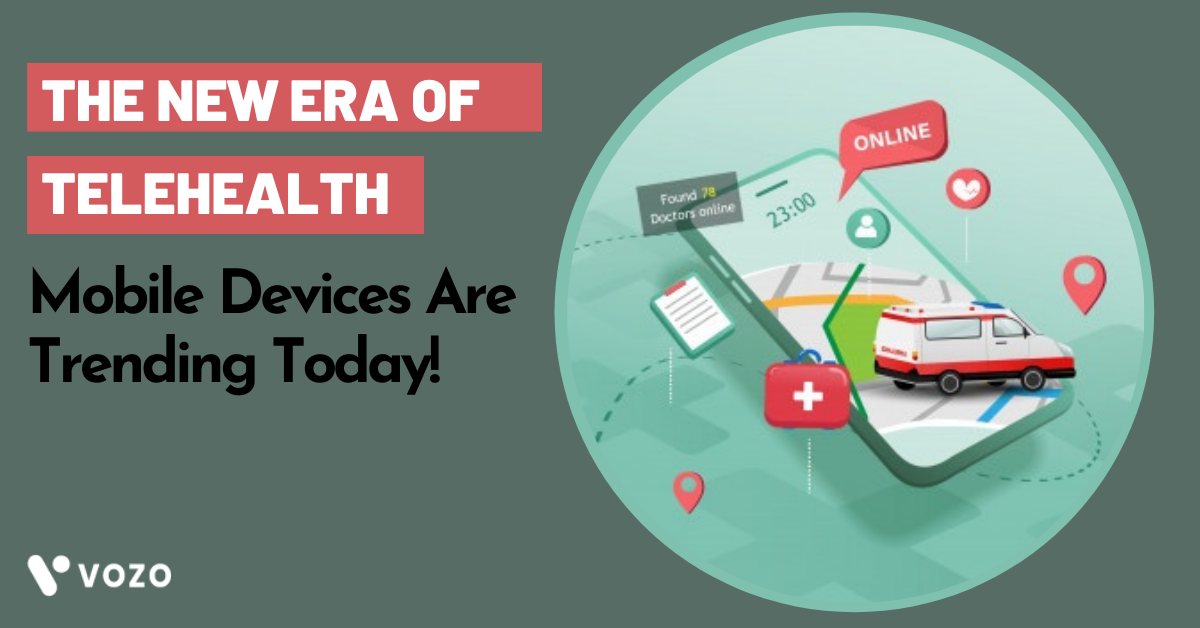The New Era Of Telehealth: Mobile Devices Are Trending Today!
Within the healthcare sector, the physicians and healthcare providers are started incorporating mobile devices in their practice everyday use. Importantly in the year 2021, due to the serious impact of COVID-19 pandemic, achieving patient engagement for improving health outcomes is really challenging.
As such new advanced technologies such as telehealth software and remote patient monitoring are being adopted to improve patient provider relationship and improve patient engagement. With telemedicine technology expanding complete access to care among remote patients, this article states the importance of telehealth and mobile technology in today’s healthcare sector.
The Growing Need For Telehealth Services In 2021
The main goal of telehealth platform is to avoid geographic constraints and deliver high quality care at any time and in any place. The three main benefits which increases the adoption of telehealth includes: greater access to patient health data, lower Cost, high quality care delivery on time
Telehealth & Mobile Devices: How It Benefits Patients?
The best telehealth software features mainly includes the online access to healthcare providers for diagnosis, treatment of common diseases, real-time video consultations, in-home monitoring of chronically ill patients and more. Along with these advantages, the usage of mobile technology benefits by reducing inappropriate use of resources by patients.
For example, if a parent with a sick child need an emergency in the middle of the night. So it won’t be possible to visit a doctor’s clinic for emergency care at that time. Here, the parent can easily able to access a healthcare provider via a mobile device (webcam) and get a timely consultation from a doctor. The usage of mobile technology for accessing telemedicine services can also potentially avoid unnecessary doctor visit. Apart from this, the telemedicine also has the right ability to assist patients with obesity, diabetes, heart disease and mental illness by reducing the number of readmissions to healthcare practice.
RELATED: Telehealth Software : Top 10 Must Have Features
Mobile Technology: The New path towards Quality Care
Mobile devices have allowed society to become more efficient and more connected, even at great physical distances from each other. Recent trends have shown a steady increase in the use of mobile devices in healthcare as well, which means that mobile devices are now further contributing to society by allowing it to stay healthier. Companies all over the world have begun to think outside the box, brainstorming and bringing to market innovative ways to use technology in patient treatment and engagement.
Doctors can now treat many ailments without ever having in-person contact with a patient. Patients can now take photos of troublesome moles or rashes and can monitor their blood pressure all from the comfort of their own home. This information can be communicated safely to their practitioner, who can determine an effective course of treatment without any need for human contact.
Remote patient monitoring allows nurses and physicians to gather data on patient vital signs without the need for constant office visits, which is especially important during the current age of Covid-19. Wearable devices can help track important information for elderly people in nursing homes and retirement communities or empower those who are still living at home but are particularly vulnerable to health issues, resulting in a lower burden for our already strained Medicare system. The use of tablets in hospitals and doctors’ offices can help streamline patient data collection and storage, reducing time spent on administration and in waiting rooms.
As more and more healthcare companies begin to implement these new mobility-centered medical technologies, the protection of patient information will be a necessary threshold concern because stringent HIPAA regulations necessitate the highest level of protection for patient information.
RELATED: How To Overcome The Challenges In Implementing Telehealth?
The Importance Of Mobile Diagnosis
With a growing number of physicians using smartphones and tablets on a daily basis, a mobile-first approach is being implemented with telehealth, now evolving from fixed monitors and communication lines to mobile platforms that enable new levels of information access and sharing capabilities.
Traditionally, telehealth was defined as a set of three applications or technology areas: video conferencing, store and forward, and remote patient monitoring. Since a smartphone or tablet can be used for both remote monitoring and video conferencing, the store and forward portion of the equation is becoming obsolete.
Telestroke:
Telestroke is another area where healthcare providers have begun to extend use of telehealth to mobile technology with the integration of smartphone and tablet-based virtual imaging. Because stroke care is extremely time-sensitive, the ability to access images quickly and remotely with capabilities such as communication via digital video cameras and Internet telecommunications, robotic telepresences along with smartphones can reduce patient disability and death.
Final Thoughts
The COVID-19 crisis has made access to healthcare really challenging today. But the mobile devices have a true potential to meet those challenges in a right path. The Medicare also approves the allowance of clinicians to offer telehealth services for patients across the country. Today, telemedicine is the best option for the majority of U.S. population, as it is helping to access quality and safe care remotely.
We are in the era of modern healthcare. As the healthcare is becoming more important, it will continue to demand new, quality, cost effective tools to access healthcare. More number of healthcare providers are started incorporating mobile devices in their medical practice, as the telehealth technology use is really to expand across the healthcare continuum.
Ready to implement telehealth to your healthcare practice? Get started with Vozo telehealth software
About the author

With more than 4 years of experience in the dynamic healthcare technology landscape, Sid specializes in crafting compelling content on topics including EHR/EMR, patient portals, healthcare automation, remote patient monitoring, and health information exchange.
His expertise lies in translating cutting-edge innovations and intricate topics into engaging narratives that resonate with diverse audiences.














